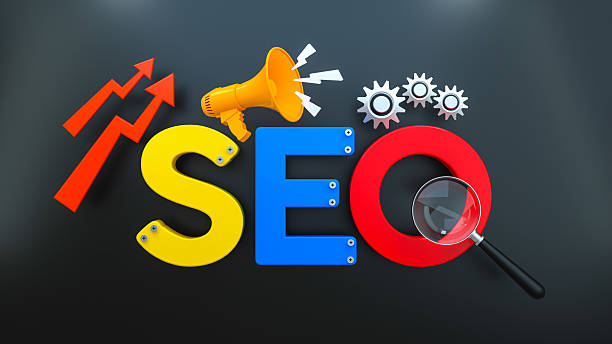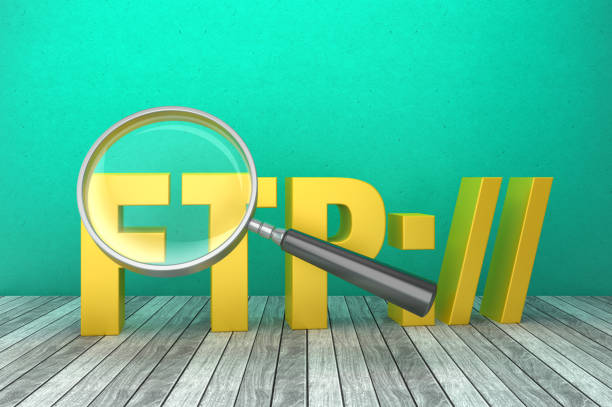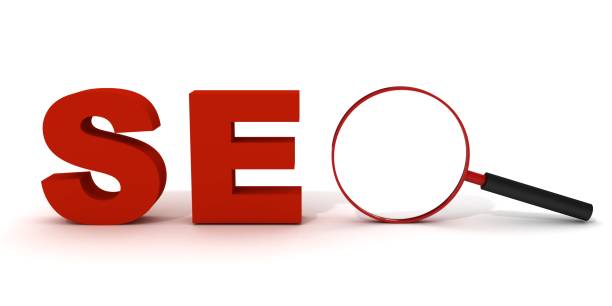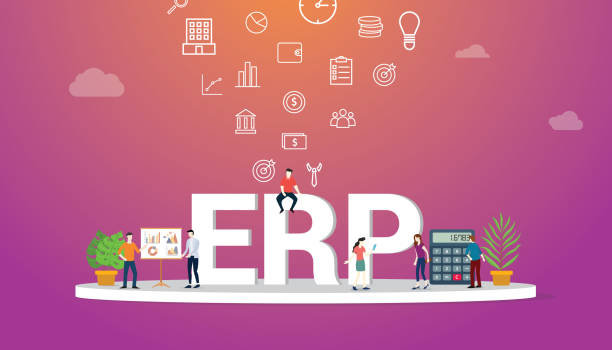What is On-Page SEO and Why is it Important?

On-page SEO, also known as internal SEO, is a set of actions you take within your website to improve its ranking in search engine results pages (SERPs).
These actions include optimizing content, site structure, HTML tags, and other website-related elements.
On-page SEO is considered one of the most important pillars of search engine optimization (SEO), as it helps search engines better understand the topic and content of your pages.
The importance of on-page SEO is due to several reasons:
- Improved Search Rankings: By optimizing various site elements, the likelihood of your pages appearing in higher search results increases.
- Increased Organic Traffic: Higher rankings in search results mean more traffic to your website.
Organic traffic is traffic obtained without paying for advertisements and is highly valuable. - Improved User Experience: Many on-page SEO techniques, such as improving site speed and proper structure, also contribute to improving user experience.
Users enjoy a website that is fast and easy to use. - Increased Conversion Rate: Targeted traffic and a good user experience help increase the conversion rate (converting visitors into customers).
In summary, on-page SEO is essential for any website that wants to be seen in search results, attract organic traffic, and provide a good user experience.
By correctly implementing on-page SEO techniques, you can achieve your marketing goals.
Are you tired of your company’s website not being seen as it should be, losing potential customers? Solve this problem forever with professional and effective website design by Rasawweb!
✅ Increase brand credibility and earn customer trust
✅ Attract targeted sales leads
⚡ Contact us now for a free consultation!
Keyword Research: The Cornerstone of On-Page SEO

Keyword research is the first and most crucial step in an on-page SEO strategy.
Keywords are the phrases users employ to search for information in search engines.
Keyword research helps you understand what your audience is looking for and what phrases they use to find it.
By identifying the right keywords, you can optimize your content to rank for those keywords in search results.
Steps in Keyword Research
- Identify Core Topics: First, identify the core topics related to your business.
For example, if you have an online cosmetics store, your core topics might include “lipstick,” “foundation,” “eyeshadow,” etc. - Generate an Initial Keyword List: For each core topic, create a list of initial keywords related to that topic.
Use free tools like Ubersuggest or Ahrefs Keyword Generator to find relevant keywords. - Check Search Volume and Competition: Using paid tools like Ahrefs or SEMrush, check the search volume and competition level for each keyword.
Keywords with high search volume and low competition are the best options to target. - Select Target Keywords: Based on search volume, competition, and relevance to your business, choose your target keywords.
Try to select a mix of primary and secondary keywords.
Important Tips for Keyword Research
- Focus on Long-Tail Keywords: Long-Tail Keywords are longer, more specific phrases that have lower search volume but also less competition, and can attract more targeted traffic to your website.
- Use LSI Keywords: LSI (Latent Semantic Indexing) keywords are words that are semantically related to your main keyword.
Using LSI keywords in your content helps search engines better understand the topic of your page.
Content Optimization: The Reign of Content and On-Page SEO

Content is king; this phrase has been repeated many times and still holds true.
Optimizing content for on-page SEO means creating high-quality, relevant, and engaging content for both your audience and search engines.
Optimized content should not only be valuable to users but also help search engines understand your page’s topic and rank it in search results.
Key Elements of Content Optimization
- Page Title (Title Tag): The page title is the most important element for SEO optimization.
The page title should be engaging, concise, and include the main keyword.
The length of the page title should not exceed 60 characters. - Meta Description: The meta description is a summary of the page’s content displayed below the page title in search results.
The meta description should be engaging, persuasive, and include the main keyword.
The length of the meta description should not exceed 160 characters. - Heading Tags: Use heading tags (H1, H2, H3, …) to organize content and highlight main and sub-headings.
The H1 tag should be used for the main title of the page and include the primary keyword. - Image Alt Text: Provide appropriate and descriptive alt text for all images on the page.
Alt text helps search engines understand the content of images. - Keyword Density: Repeat your main keyword naturally within the content text.
Avoid excessive keyword repetition, as this can lead to penalties from search engines. - Internal Linking: Link to other pages within your website to help search engines better understand your site structure and to help users navigate your site easily.
- External Linking: Link to reputable websites relevant to your page’s topic to show search engines that your page is a valuable source of information.
Important Tips for Content Optimization
- Focus on Content Quality: Your content should be high-quality, valuable, and relevant to your audience’s needs.
- Update Content: Regularly update your content to ensure the information provided is accurate and up-to-date.
- Content Readability: Use short and simple sentences and divide your content into small, digestible sections.
| Optimization Element | Description | Best Practice |
|---|---|---|
| Page Title (Title Tag) | The page title displayed in search results. | Engaging, concise, and includes the main keyword (max 60 characters) |
| Meta Description | A summary of the page content displayed below the title in search results. | Engaging, persuasive, and includes the main keyword (max 160 characters) |
| Heading Tags | Used to organize content and highlight main and sub-headings. | Use H1 for the main title and H2-H6 for sub-headings |
Website Structure Optimization: Information Architecture and On-Page SEO

Your site structure plays a crucial role in on-page SEO.
A good site structure helps search engines easily find and index your pages, and helps users navigate your site effortlessly.
A logical and organized site structure improves user experience and shows search engines that your site is a reputable source of information.
Key Elements of Site Structure Optimization
- Friendly URLs: Your page URLs should be short, descriptive, and include the main keyword.
Avoid using long and complex URLs that contain incomprehensible numbers and letters. - Hierarchical Structure: Organize your pages in a logical hierarchical structure.
Use categories and subcategories to organize content. - Navigation Menu: Create a clear and easy-to-use navigation menu that helps users move around your site easily.
- Sitemap: Create an XML sitemap and submit it to Google Search Console.
A sitemap helps Google find and index all pages of your site. - Robots.txt File: Use the Robots.txt file to control search engine access to specific parts of your site.
Important Tips for Site Structure Optimization
- Click Depth: Try to reduce the click depth (the number of clicks a user must make to get from the homepage to a specific page) as much as possible.
- Internal Linking: Use internal linking to guide users and search engines to important pages on your site.
- Responsive Design: Ensure that your website is optimized for various devices (mobile, tablet, desktop).
Are your e-commerce site visitors leaving before making a purchase? Don’t worry anymore! With Rasawweb’s professional e-commerce website design services, solve the problem of not converting visitors into customers forever!
✅ Significant increase in conversion rate and sales
✅ Unparalleled and attractive user experience
⚡ Contact us now for a free consultation!
Site Speed Optimization: User Experience and On-Page SEO

Site speed is one of the important factors in on-page SEO ranking and user experience.
Users expect web pages to load within a few seconds.
If your site is slow, users may leave it and go to another site.
Furthermore, Google has announced that site speed is one of the ranking factors in its algorithms.
Methods to Improve Site Speed
- Image Optimization: Large and unoptimized images can slow down your site.
Optimize your images before uploading and use appropriate image formats (such as JPEG or WebP). - Enable Compression: Use Gzip compression to reduce the size of HTML, CSS, and JavaScript files.
- Use Caching: Use caching to store a copy of your site’s pages in the user’s browser.
This makes your site pages load faster. - Reduce HTTP Requests: Reduce the number of HTTP requests.
The fewer HTTP requests, the faster your site will load. - Use a CDN: Use a Content Delivery Network (CDN) to distribute your site’s content across different servers worldwide.
This makes your site load faster for users in different parts of the world. - Code Optimization: Optimize your HTML, CSS, and JavaScript code.
Remove unnecessary code and use minification to reduce file sizes.
Site Speed Check Tools
Mobile Optimization: Mobile-First Prioritization and On-Page SEO

Given the increasing use of mobile devices for web browsing, optimizing a website for mobile is of particular importance.
Google also introduced the Mobile-First Indexing algorithm in 2019, which means Google uses the mobile version of your website for indexing and ranking.
Therefore, if your website is not optimized for mobile, you may lose your ranking in search results.
Mobile Optimization Methods
- Responsive Design: Use responsive design so that your website automatically adapts to the screen size of different devices.
- Site Speed: Optimize your site speed for mobile devices.
Mobile users expect web pages to load faster. - User Experience: Optimize your site’s user experience for mobile devices.
Use large, touch-friendly buttons and avoid placing content in hard-to-reach locations. - Fonts: Use legible and appropriate fonts for mobile devices.
- Pop-ups: Avoid using pop-ups on mobile devices, as they can disrupt the user experience.
Mobile Compatibility Test Tools
Image Optimization: The Role of Images in On-Page SEO

Images can play a significant role in on-page SEO.
Engaging images can capture users’ attention and encourage them to stay longer on your site.
Additionally, optimized images can help search engines better understand the topic of your page.
Image Optimization Methods
- Choose Relevant Images: Use images that are relevant to your page’s content.
- Optimize Image Size: Optimize the size of your images before uploading.
Large images can slow down your site. - Use Appropriate Image Formats: Use appropriate image formats (such as JPEG or WebP).
- Alt Text: Provide appropriate and descriptive alt text for all images on the page.
Alt text helps search engines understand the content of images. - File Name: Use descriptive file names that include keywords.
| Image Feature | Description | Optimization Tips |
|---|---|---|
| File Size | Image file size in kilobytes or megabytes | Reduce file size as much as possible (preferably under 100 KB) using compression tools |
| File Format | Image format type (JPEG, PNG, WebP) | Use JPEG for photos, PNG for high-detail and transparency images, and WebP for best compression |
| Alt Text | Short description of the image for search engines and users | Use descriptive text relevant to the main keyword |
Internal Linking: Creating a Network of Internal Connections

Internal linking refers to linking from one page of a website to other pages within the same website.
Internal linking helps search engines better understand your site’s structure and helps users navigate your site easily.
Additionally, internal linking can help distribute link juice throughout your site.
Benefits of Internal Linking
- Improved Search Rankings: Internal linking helps search engines find and index important pages on your site.
- Improved User Experience: Internal linking helps users easily navigate your site and find the information they need.
- Increased Time on Site: Internal linking can encourage users to stay longer on your site and view more pages.
- Distribution of Link Value: Internal linking helps distribute link value (Link Juice) throughout your site.
Important Tips for Internal Linking
- Link to Relevant Pages: Only link to pages relevant to the content of the current page.
- Use Appropriate Anchor Text: Use descriptive anchor text relevant to the destination page.
- Avoid Broken Links: Avoid broken links.
- Use Nofollow Links if Necessary: If necessary, use Nofollow links for linking to untrustworthy pages.
On-page SEO helps you get more visibility.
Do you dream of a thriving online store but don’t know where to start?
Rasawweb is your comprehensive e-commerce website design solution.
✅ Attractive and user-friendly design
✅ Increase sales and revenue⚡ Get a free consultation
User Experience (UX): The Core of Modern On-Page SEO

In the world of modern on-page SEO, User Experience (UX) is of particular importance.
Google and other search engines are increasingly paying attention to UX signals, and websites that provide a better user experience achieve higher rankings in search results.
A good user experience makes users stay longer on your site, view more pages, and increases the likelihood of their return to your site.
Key Factors in User Experience
- Site Speed: Your site speed should be high.
Users do not expect web pages to take more than a few seconds to load. - Responsive Design: Your website should be optimized for various devices (mobile, tablet, desktop).
- Easy Navigation: Your site’s navigation should be easy and clear.
Users should be able to easily find the information they need. - Content Readability: Your site’s content should be legible and understandable.
Use short and simple sentences and appropriate fonts. - Visual Appeal: Your site’s design should be attractive and professional.
Use high-quality images and videos.
How to Improve User Experience
- Conduct Usability Testing: Ask users to use your site and provide feedback on the user experience.
- Check Google Analytics Statistics: Review Google Analytics statistics to see how users interact with your site.
- Use User Behavior Analysis Tools: Use user behavior analysis tools (such as Hotjar) to observe how users interact with your site.
- Continuous Optimization: Continuously optimize the user experience and make necessary changes based on user feedback and statistics.
On-page SEO is incomplete without attention to user experience.
Measuring and Analyzing Results: An Essential Step in On-Page SEO

After implementing an on-page SEO strategy, it is essential to measure and analyze your results.
Measurement and analysis help you understand which techniques are effective and which need improvement.
By using data, you can optimize your strategy and achieve better results.
Key Metrics for Measuring SEO Results
- Organic Traffic: The amount of traffic that comes to your site through search engines.
- Keyword Rankings: The ranking of your pages in search results for target keywords.
- Bounce Rate: The percentage of visitors who leave your site after viewing only one page.
- Time on Site: The amount of time users spend on your site.
- Conversion Rate: The percentage of visitors who complete a desired action (such as a purchase, registration, contact).
Measurement and Analysis Tools
- Google Analytics: A free tool for measuring website traffic and user behavior.
- Google Search Console: A free tool for checking your site’s performance in search results and receiving information about indexing errors.
- Keyword Tracking Tools: Tools for tracking the ranking of your pages in search results for target keywords.
Important Tips for Measurement and Analysis
- Set Goals: Before starting, define your goals.
What do you want to achieve with SEO? - Continuous Tracking: Continuously track your results and look for patterns and trends.
- Continuous Optimization: Optimize your strategy based on data and apply necessary changes.
With precise data analysis and continuous optimization, excellent results can be achieved in on-page SEO.
On-page SEO leads to business prosperity.
Frequently Asked Questions
| Question | Answer |
|---|---|
| What is On-Page SEO? | It refers to a set of actions performed within a website to improve its ranking in search engines. |
| Why is On-Page SEO important? | Because it helps search engines better understand your site’s content and structure, and it improves user experience. |
| What are the most important elements of On-Page SEO? | Title and meta descriptions, keywords, URL structure, quality content, image optimization, internal linking, and site speed. |
| How do we optimize the title (Title Tag) and meta description? | The title should include the main keyword and be engaging, and the meta description should be a persuasive summary of the content with relevant keywords. |
| What is the role of keywords in On-Page SEO? | Keywords tell search engines what the page content is about and should be used naturally and smartly in the text. |
| How is image optimization done for On-Page SEO? | By compressing size, using descriptive file names, and filling the Alt tag with relevant descriptions and keywords. |
| What is internal linking and what is its use? | It is connecting different pages of the site to each other. This helps distribute page authority and improves search engine crawling. |
| What is the importance of site loading speed in On-Page SEO? | High speed improves user experience and is one of the important ranking factors for search engines like Google. |
| What impact does website responsiveness (Mobile-Friendliness) have on On-Page SEO? | Given the increase in mobile users, responsiveness is essential for providing a suitable user experience across all devices and for Google’s mobile-first indexing priority. |
| What are the important content-related factors in On-Page SEO? | Originality, quality, comprehensiveness, readability, proper use of headings (H1, H2,…), and regular content updates. |
And other services of Rasawweb Advertising Agency in the field of advertising
- Smart Customer Journey Map: A fast and efficient solution for campaign management focusing on custom programming.
- Smart Data Analysis: A professional solution for improving SEO ranking focusing on intelligent data analysis.
- Smart Data Analysis: A fast and efficient solution for digital branding focusing on attractive UI design.
- Smart Digital Branding: Professional optimization for increasing sales using Google Ads management.
- Smart Sales Automation: Professional optimization for online growth using user experience customization.
And over hundreds of other services in the field of internet advertising, advertising consulting, and organizational solutions
Internet Advertising | Advertising Strategy | Advertorial
Resources
Iran SEO On-page SEO Articles
Web Ramz Blog: On-page SEO
SEOSaz: Complete Guide to On-page SEO
Ranginak: On-page SEO Checklist
? To elevate your business in the digital world and be seen at the top, Rasawweb Afarin, a specialist in digital marketing services including corporate website design, is your professional partner.
📍 Tehran, Mirdamad Street, next to Bank Markazi, Kazeroun Jonoubi Alley, Ramin Alley No. 6


